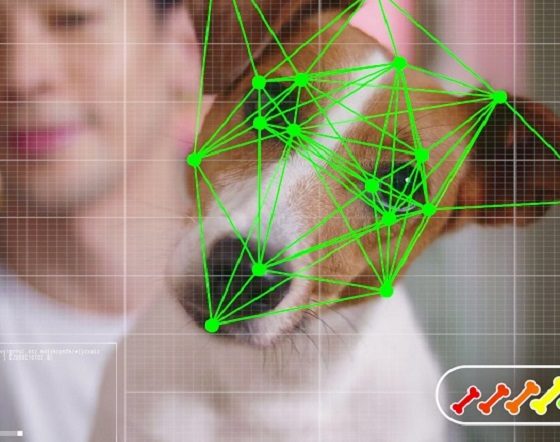Pet-commerce
By Petz
Petz launched the site Pet-commerce, which is the first site of e-commerce where dogs can buy things for themselves. The dog just needs to watch the products video, an artificial intelligence activated by facial recognition will tell, according to the position of dog’s ears, mouths and other signs, if the dog likes the product or not. The UI/UX of the site, as well as the products videos, have been adjusted to meet dogs’ vision and hearing frequency.
Breath of Life
By GSK
COPD (Chronic obstructive pulmonary disease) is one of the top three causes of death in China but only 7% of them are properly diagnosed. To raise the awareness and encourage people to do the self-check, GSK introduced “Breath of Life”, a program integrated into Wechat that allows to people to check their lung volume and to share it on social media. Inspired by the traditional Chinese ‘blowing-ink’ art, this program transforms users’ breath blew into smartphone’s microphone into soundwave, then via an algorithm, shows the soundwave in a more user-friendly and visualized way : an ink-tree.
Blindmeters
By OVK / PEVR (Parents of Road Victims)
Texting and driving is dangerous but many people still do it because “it’s just a quick text/little post on Facebook or Snapchat”. OVK/PEVR wanted to show on how many meters people will be driving blind when typing a message. Teamed with Happiness Brussels, they launched a website that, by combining data from different map sources, can show people on Google Map the stretch of meters they will miss when typing a quick message, after they choose the road they usually drive on, the speed and the message they want to write.
Fetch Across The Internet
By Mars, Inc. - Pedigree
The team united four of the biggest platforms for a completely unique user experience. Continuation rate was high : nearly all those opted to play Fetch across platforms chased the dog all the way across the internet until he reached the ball.
Emotional Art Gallery
By Clear Channel
In response to research that named Stockholm’s population the most stressed in Sweden, Clear Channel has transformed Stockholm’s Metro into an emotion-triggered art exhibition, in a bid to combat commuter stress. The bespoke algorithm used for this installment analyzes dynamic, public data within Google searches, social media, news articles and travel traffic information to interpret if people feel sad, anxious, tired, stressed, irritated or afraid, then triggered artworks on digital billboards in response to emotions of people near the billboard.
BURN THAT AD
By Burger King
In Brazil, fast food restaurant chains’ advertisings are everywhere, most of them are from Burger king’s direct competitors. Burger King wanted to hack the competition by leveraging its brand’s biggest signature : the fire. The brand encouraged users of its mobile app to point their camera to rival’s ad (print, coupon or billboard), then they will see, through augmented reality, rival’s ad turning into fire. After the ad is burnt away, a Burger King ad will replace the original ad, and the user will receive a free whopper at the nearest Burger King.
RED ROCK DELI, THE SYNC TO SALES
By Red Rock Deli
Digital campaigns are widely used befor store opening ceremonies to generate flow of visitors. However, they are typically used to drive as much traffic as possible, instead of control the quality of visit experience. Red Rock Deli, as a premium chips brand, doesn’t want visitors to associate their pop-up store, thus its brand image with a chaotic food store, so they created an three-way-link digital campaign which used real-time sales data and machine learning to raise or lower the bid to buy digital media , in order to control the traffic, thus to offer enough quality visit time for every consumer.
THE FLIXONASE ALLERGY MONITOR
By GSK
1 in 4 Chinese people is suffering from nasal allergies. However, they simply attribute their allergies to air pollution, and ignore that weather conditions and allergens are causes of nasal allergies too. GSK decided to collaborate with MOJI Weather, the most used weather app in China, to create the Flixonase allergy monitor which indicates the real-time level of allergen, and to send geo-located coupons on high allergen days which encourage consumers to seek Flixonase nasal spray in nearby pharmacy then incentivize their purchase.
Top Gifting Choice by Uniqlo
By Uniqlo
In China, young adults always bring gifts to their elder family members when they go back to hometown during the holiday of Chinese New Year. However, most Chinese prefer « healthy and practical » gifts such as foods, electronics or cosmetics, and clothing is not at the top of the gift list. Uniqlo wanted to remind Chinese people that clothes could also be a relevant part of the holiday, by using location-based coupons and AI powered Wechat campaign to send them gift recommendations with one-click order button.








